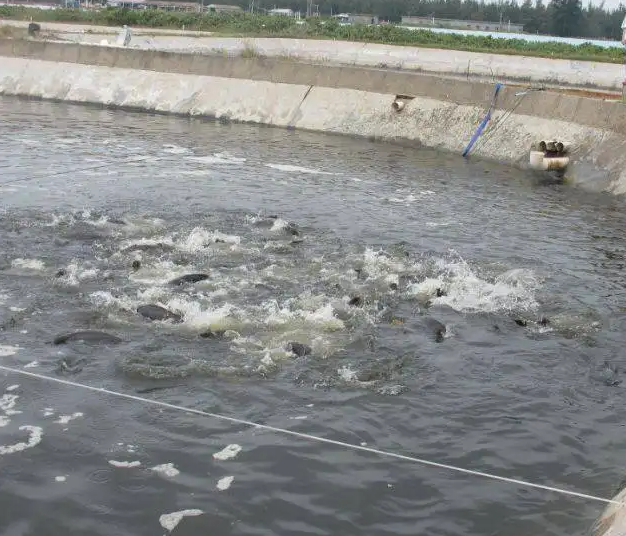News
Aquaculture experience sharing: common fish disease prevention techniques

A. Prevention of fish diseases
1. Do a good job of disinfection
(1) The fish body can be soaked in potassium permanganate solution of 15-20mg/L concentration for 15-20min when the disinfection water temperature is above 15 ℃; When the water temperature is below 15 ℃, it can be considered to use povidone iodine and other less irritating drugs to disinfect the fish. Specific disinfection methods should be determined according to the microscopic examination results of the fish and the type of pathogens.
(2) Feed disinfection Fresh and live bait collected from the field generally carries pathogens and is disinfected with 3% salt water for 3-5 minutes.
(3) Disinfection of tools All tools shall be put into the tool disinfection tank for disinfection after use. Use 600mg/L bleach solution as disinfectant, and wash the tools with clean water before use.
2. Strict quarantine system
Frequently conduct sampling inspection on the fish body, understand and control the number of pathogens, and timely isolate, observe and treat fish diseases, especially infectious diseases, to prevent the spread of diseases; The new fish can only be mixed with the fish in the original pond after the fish body is confirmed to be healthy.
3. Scientific management
Feed appropriate amount and pay attention to the quality of feed. Add microbial additives mainly including lactobacillus, bacillus subtilis and yeast in the feed to improve the intestinal environment of fish; According to the ecological niche of cultured fish, the bottom modification microecological agent mainly composed of Bacillus subtilis shall be used to improve the sediment in due time; The water quality can be improved by microecological agents such as EM bacteria, photosynthetic bacteria and enterococcus faecalis; Avoid injury and infection of fish body caused by careless operation and transportation, and timely treat fish body injury if any; Do not spray pesticides and other toxic substances near the fish pond to avoid hurting the fish; The stocking density should be appropriate; Patrol the pond frequently, carefully observe the performance of the fish body, so as to master the changes of the pond, and take measures to improve it in time.
4. Drug prevention
In the season of fish diseases, drugs can be sprinkled into the water and added to the feed regularly to prevent the occurrence of fish diseases.
B. Diagnosis of fish diseases
1. Site investigation
If a fish gets sick or dies, it is necessary to understand the abnormal phenomena on the surface and inside of the sick fish and in the fish pond; Whether fish disease or death is caused by illegal operation; Learn about the speed of onset, the species of death, the total number of deaths at one time, the time of death, the symptoms of the diseased fish, whether they jump up and down rapidly, whether the fish are floating on the water or sinking on the bottom, and how the color of the body changes; Check whether the water quality is normal and whether it is polluted.
2. Visual inspection
Find out various features of the diseased parts or some visible pathogenic organisms to provide basis for diagnosis of fish diseases.
(1) On the body surface, place the diseased fish that has just died or is not dead on the anatomical plate, and carefully observe the head, mouth, eyes, gill cover and fins of the fish body to check whether the skin is congested, inflamed, festered, how much mucus is on the body surface, whether the base of the fins is congested, and whether the edges are normal, to see whether there are large pathogenic organisms or special symptoms.
(2) The inspection of gill and gill is focused on the gill filament. First, pay attention to whether the gill cover is open, and then open the gill cover to observe whether the color of the gills is normal, whether there is more mucus, and whether the gill filament is swollen and ulcerated. Whether there are skylights on the inner side of the operculum and parasites visible to the naked eye.
(3) The viscera cut the body cavity of the diseased fish. First, observe whether the shape and color of the intestine, liver, gallbladder, gonad, spleen, and swim bladder are normal, whether there is congestion, inflammation, and large parasitic parasites. Visceral examination: The midgut is the focus of the examination. The intestines of the diseased fish should be peeled to see whether the intestines are congested, whether there is ascites, whether there are large parasites in the body cavity, and whether there is congestion, inflammation and ulceration.
3. Microscopic examination
(1) Microscopic examination: The gill mucus, body surface mucus and internal organs of the diseased fish were scraped and made into slide specimens, and the parasitism of pathogens was observed under the microscope.
(2) If more than two pathogens are found when searching for pathogens and checking fish diseases, it is necessary to compare and analyze the infection intensity of various pathogens, the degree of harm to fish and the symptoms of diseased fish, so as to find out the primary and secondary to take effective control measures.
C. Prevention and treatment of common diseases
(1) Fish body soaking method: prepare high concentration drugs in a certain container, soak the fish body in a short time, so as to kill pathogens; The soaking time is mainly determined by the water temperature and the drug resistance of the fish. Usually, when the water temperature is high, the efficacy is fast, the toxicity is strong, and the soaking time is short; When the sick fish is weak, the soaking time should be short, and the soaking time should not be extended at will when using drugs with greater toxic and side effects. Generally, the longer the immersion time is, the better the treatment effect is within the drug safety range. During immersion treatment, the operator shall observe the activity of the fish and the reaction to drugs at any time to avoid poisoning of the fish and hypoxia in the container. The soaking time shall be strictly consistent to avoid affecting the efficacy or causing harm due to the difference of soaking time. The drugs are mainly potassium permanganate and iodine preparations. This method is mainly used for cage culture.
(2) The whole pond sprinkling method adopts the drug soluble water which is safe for fish and has obvious curative effect, and after dilution, it is evenly sprinkled in the aquaculture water body to kill the fish body and pathogens in the water body. In order to ensure the curative effect, the water volume of the pool should be accurately measured to ensure the correct concentration is used. In terms of aquaculture management, necessary measures should be taken to ensure the therapeutic effect.
(3) Oral administration
1. Mix the therapeutic drug and adhesive in the feed and feed it on the spot.
2. The drug is mixed into the feed and then processed into drug pellet feed with adhesive for feeding, which is used for routine prevention and auxiliary treatment.
3. The hanging bag method is mainly used for drug use in large areas of water. The drug is hung around the food place where fish often move, forming a local area with high concentration of drugs to disinfect and treat the fish. The main drugs are bleaching powder, copper sulfate, quicklime, etc.
Welcome to contact:+8618013418091(Whatsapp/wechat)
+8618013418097(Whatsapp/wechat)
 Alvin
Alvin hugh778
hugh778